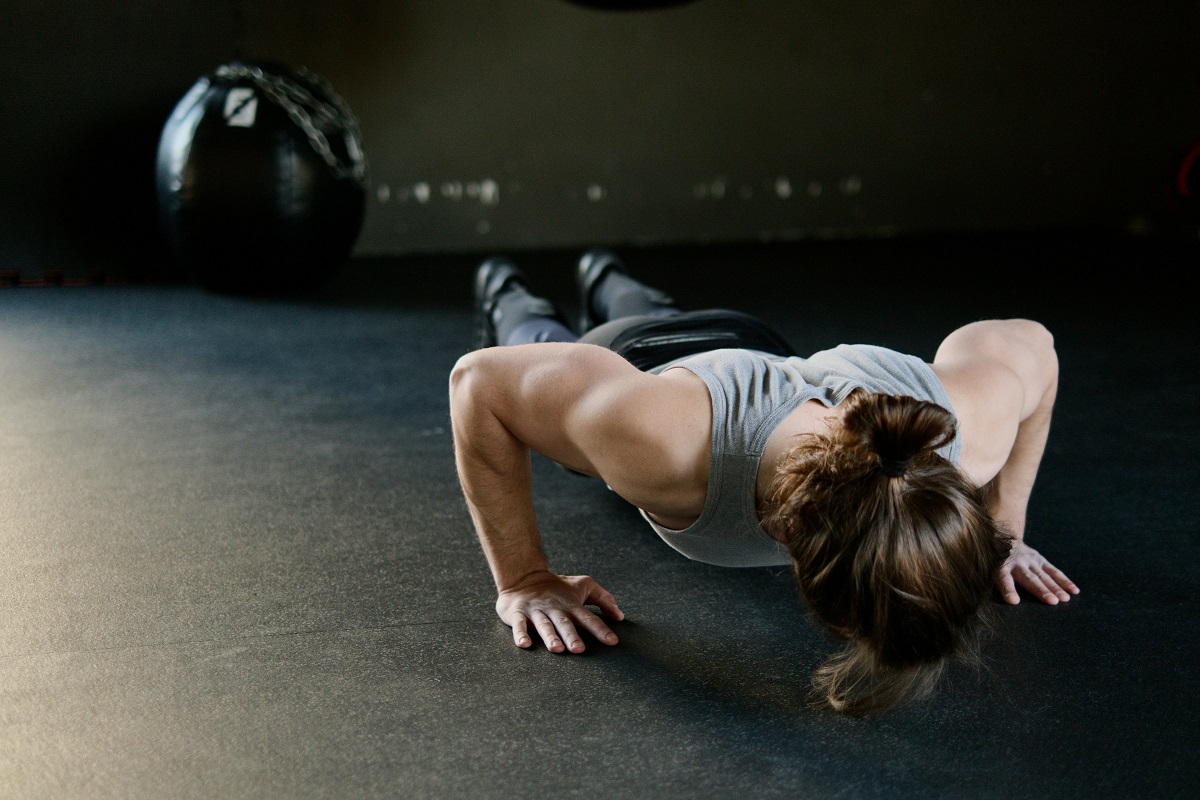
Fitness is not just about pushing your body to its limits; it’s equally about how well you recover afterward. Recovery plays a crucial role in muscle repair, injury prevention, and overall performance improvement. Incorporating effective recovery methods into your fitness plan ensures that your body has the necessary time and resources to heal, adapt, and grow stronger. Whether you’re a casual gym-goer or an elite athlete, understanding the science behind recovery can elevate your fitness journey.
This article explores the many facets of recovery and how it intertwines with fitness goals. We will dive into the different types of recovery, the critical role of sleep and nutrition, and how rest days can be strategically planned. Additionally, you’ll learn about techniques like foam rolling, mindfulness, and when to seek professional help—whether from local massage therapy experts, chiropractors, or healthcare management professionals. By embracing recovery as part of your fitness regimen, you can minimize setbacks and achieve sustainable progress.
Why Is Recovery Important in a Fitness Plan?

Understanding Muscle Repair
At the heart of recovery is muscle repair. During exercise, especially strength training, muscle fibers undergo microscopic damage. The repair process involves the body rebuilding these fibers stronger than before, which is fundamental to increasing fitness. Without adequate recovery, this repair is incomplete, potentially leading to weakened muscles and stalled progress.
Impact on Performance Improvement
Consistent recovery allows you to perform at your best during workouts. It replenishes glycogen stores, reduces muscle soreness, and improves neuromuscular function. Ignoring recovery can result in fatigue, decreased motivation, and impaired coordination, which negatively affects performance.
Prevention of Injury and Burnout
Just like cosmetic surgeons suggest a period of rest and recovery after the trauma of surgery, your body needs to rest after what’s essentially muscle tearing caused by exercise. Recovery is key to preventing overuse injuries and burnout. Injury attorneys often see clients whose problems stem from neglecting proper rest. Incorporating recovery reduces the risk of strains, sprains, and chronic conditions that could otherwise derail your fitness plans.
What Are the Different Types of Recovery?
Active Recovery Techniques
Active recovery involves low-intensity exercises such as walking, swimming, or cycling at a gentle pace. These activities promote blood flow, which helps clear metabolic waste products from muscles and supplies nutrients needed for repair. Local massage therapy can complement active recovery by reducing muscle tightness and improving circulation.
Passive Recovery Methods
Passive recovery is complete rest, allowing the body to heal without additional physical stress. This can include sleeping, sitting, or lying down. Both active and passive recovery have their place, depending on your training intensity and fitness level. Think of it as recovering from dental surgery; you’re not going to want to do anything strenuous.
Nutritional Recovery Strategies
Nutrition is a cornerstone of recovery. Eating the right macronutrients—proteins, carbohydrates, and fats—after workouts fuels muscle repair and replenishes energy stores. Hydration also plays a significant role, as fluids are essential for nutrient transport and temperature regulation.
How Does Sleep Affect Recovery?
The Science of Sleep and Muscle Recovery
Sleep is one of the most powerful recovery tools available, serving as a vital period when the body undertakes crucial repair processes. During deep sleep stages, particularly slow-wave sleep, the pituitary gland releases growth hormone, which stimulates tissue repair, muscle growth, and cell regeneration. This hormone plays a key role in rebuilding muscles stressed during exercise and enhancing overall recovery. Additionally, sleep supports the immune system by producing cytokines, which fight inflammation and infection. Lack of quality sleep can compromise these functions, delaying recovery, increasing fatigue, and making the body more vulnerable to injury—ultimately hindering fitness progress.
Recommended Sleep Duration for Athletes
Most fitness experts recommend 7 to 9 hours of sleep per night for the average adult, but athletes or highly active individuals may require even more to fully support recovery demands. Some research suggests elite athletes benefit from 9 to 10 hours, including naps. Personalized healthcare management programs often assess sleep duration and quality using wearable trackers or sleep studies to tailor recommendations. Optimizing sleep patterns ensures that athletes receive sufficient deep and REM sleep phases, which are critical for cognitive function, physical repair, and energy restoration.
Tips for Improving Sleep Quality
Improving sleep quality involves more than just extending sleep duration. Maintaining a consistent sleep-wake schedule helps regulate the body’s internal clock, making it easier to fall asleep and wake refreshed. Creating a dark, quiet, and cool sleep environment minimizes disruptions and encourages restorative sleep. Limiting exposure to screens and blue light in the hour before bed reduces melatonin suppression, helping you fall asleep faster. Additionally, some individuals find that chiropractic adjustments alleviate physical discomfort or misalignments that interfere with deep, restful sleep, indirectly boosting recovery and fitness outcomes.
What Role Does Nutrition Play in Recovery?

Macronutrients for Recovery
Proteins provide amino acids necessary for muscle repair, while carbohydrates restore glycogen levels depleted during exercise. Healthy fats support hormone production and reduce inflammation. Balancing these macronutrients is essential to effective recovery and ongoing fitness.
Importance of Hydration
Proper hydration ensures that nutrients reach muscles efficiently and toxins are flushed out. Dehydration can lead to cramping, fatigue, and slower recovery. Drinking water before, during, and after workouts is vital.
Timing of Nutrition Post-Workout
The post-workout window, typically 30 to 60 minutes after exercise, is critical for nutrient absorption. Consuming a combination of protein and carbohydrates during this time maximizes muscle repair and glycogen replenishment.
How Can You Incorporate Rest Days into Your Schedule?
Determining Rest Needs Based on Activity Level
Rest needs vary depending on workout intensity, frequency, and individual fitness levels. Beginners may require more rest days, while seasoned athletes might benefit from active recovery on some rest days. Consulting with healthcare management professionals or chiropractors can help tailor rest schedules to individual needs.
Scheduling Techniques for Optimal Recovery
Many fitness plans utilize periodization—alternating between intense training and recovery phases. Scheduling rest days after heavy workouts prevents overtraining and promotes steady progress.
Balancing Rest and Training for Progression
Balancing training intensity with adequate rest prevents burnout and reduces injury risk. Injury attorneys often highlight the importance of listening to your body and allowing recovery to avoid setbacks caused by preventable injuries.
What Are the Signs That You Need More Recovery?
Identifying Physical Cues of Overtraining
Physical symptoms like persistent muscle soreness, decreased strength, increased heart rate at rest, and frequent illness can signal overtraining. Early recognition and increased recovery can prevent more serious injuries requiring intervention by injury attorneys.
Mental Signs of Exhaustion
Mental fatigue, irritability, lack of motivation, and difficulty concentrating often accompany physical exhaustion. Mindfulness and stress management techniques can aid mental recovery and improve overall fitness outcomes.
Understanding Long-term Recovery Needs
Long-term recovery considerations involve listening to your body’s signals and sometimes consulting with healthcare providers. Peripheral angiogram angioplasty stenting or other medical interventions may be necessary if circulation issues affect recovery.
How Do Different Sports Require Different Recovery Methods?

Endurance Sports vs. Strength Training
Endurance athletes often focus on replenishing glycogen and reducing inflammation through active recovery techniques such as light jogging, swimming, or cycling at a low intensity. These activities help flush out metabolic waste products and decrease muscle soreness. Additionally, endurance athletes might incorporate compression garments and cold-water immersion to further ease inflammation. On the other hand, strength trainers prioritize muscle repair through adequate protein intake, complete rest days, and methods like foam rolling to alleviate muscle tightness. Both groups benefit from recovery strategies tailored to their specific training demands, as ignoring these differences can lead to inefficient recovery and performance plateaus.
Sport-Specific Recovery Protocols
Sports like running, swimming, and cycling each impose unique stresses on the body that require specialized recovery protocols. For example, runners often contend with repetitive impact injuries, making techniques recommended by chiropractors and local massage therapy experts—such as deep tissue massage or targeted joint mobilization—particularly beneficial. Swimmers may emphasize shoulder mobility and active recovery to prevent stiffness. Tailoring recovery to the particular biomechanics and common injury patterns of each sport optimizes restoration and prepares athletes for their next training session.
Cross-Training Recovery Considerations
Cross-training introduces variety and reduces the repetitive strain that often comes from focusing solely on one sport. However, because multiple training modalities are involved, recovery strategies must be adaptive and comprehensive. For instance, a cyclist who also weight trains should balance cardiovascular-focused active recovery with muscle-specific rest and nutrition. Failing to adjust recovery approaches appropriately may increase the risk of overuse injuries and hinder overall fitness gains.
What Techniques Can Enhance Recovery?
Foam Rolling and Self-Myofascial Release
Foam rolling is widely used to release muscle tightness, increase flexibility, and promote blood flow to tissues. By applying sustained pressure to trigger points and adhesions, foam rolling helps break up scar tissue and improve range of motion, which can speed up recovery and reduce post-exercise soreness. Many athletes integrate foam rolling with sessions of local massage therapy, amplifying its effects through hands-on manipulation and targeted muscle relaxation.
Stretching and Flexibility Exercises
Incorporating both dynamic and static stretching into your routine supports muscle length maintenance and joint mobility, which are essential for injury prevention and optimal movement. Dynamic stretching before workouts warms muscles and prepares them for activity, while static stretching afterward helps relieve tension and improve circulation. Consistent flexibility work reduces muscle imbalances and facilitates quicker recovery by enhancing nutrient delivery to muscle tissues.
Utilizing Technology for Recovery (e.g., Massage Guns)
Technological tools like massage guns have surged in popularity due to their ability to deliver percussive therapy quickly and effectively. These devices use rapid pulses to penetrate deep muscle layers, alleviating knots, and stimulating blood flow, which aids in faster waste removal and tissue repair. When used appropriately, massage guns complement traditional recovery methods and can be a convenient addition to an athlete’s toolkit, especially for targeting hard-to-reach or stubborn muscle groups.
How Can Mindfulness and Mental Health Impact Recovery?
The Connection Between Stress and Physical Recovery
Chronic stress has a profound impact on physical recovery by elevating cortisol levels, which can inhibit muscle repair, suppress immune function, and increase inflammation. Stress also commonly disrupts sleep patterns, further impairing the body’s ability to heal. Recognizing and managing stress through mindfulness practices is therefore vital for anyone seeking to optimize their fitness progress and overall recovery.
Mindfulness Techniques for Enhanced Recovery
Incorporating mindfulness techniques like meditation, deep breathing exercises, and progressive muscle relaxation helps reduce psychological stress and improve mental clarity. These practices activate the parasympathetic nervous system, encouraging a relaxation response that supports physical healing. Over time, regular mindfulness enhances an athlete’s ability to manage training stress and recover more effectively.
The Importance of Mental Rest in Training
Mental fatigue can undermine motivation, focus, and even increase the risk of injury due to decreased concentration during workouts. Just as physical rest is critical, allowing the mind time to unwind through hobbies, social connections, or quiet solitude is essential to comprehensive recovery. Prioritizing mental rest completes the recovery cycle and supports sustainable fitness development.
When Should You Seek Professional Help for Recovery?

Recognizing Serious Injuries vs. Fatigue
Distinguishing between normal fatigue and signs of serious injury is crucial. Sharp, persistent pain, swelling, bruising, or weakness that limits movement may indicate an injury needing professional evaluation. Personal injury attorneys often emphasize the importance of timely medical assessment to prevent complications and to document injuries properly for legal or insurance purposes.
Benefits of Working with a Sports Therapist
Sports therapists specialize in preventing injuries, optimizing recovery, and rehabilitating musculoskeletal conditions. They provide customized treatment plans, including manual therapy, corrective exercises, and education on injury prevention. Collaborating with a sports therapist can accelerate healing and safely guide you back to peak fitness after injury or intense training.
When to Consult a Nutritionist for Recovery
Nutritionists offer invaluable support for recovery by designing personalized eating plans that ensure athletes receive sufficient calories, macronutrients, and micronutrients to fuel repair and adaptation. Those engaged in rigorous training benefit from expert guidance on supplementation and hydration strategies that minimize deficiencies and improve performance longevity.
Conclusion
Incorporating recovery into your fitness plan is essential for long-term success and health. Recovery allows your body to repair damaged tissues, replenish energy stores, and adapt to training demands, ultimately leading to improved performance and reduced injury risk. Neglecting recovery can cause setbacks that may require the intervention of personal injury lawyers or healthcare management professionals to address.
Effective recovery combines various strategies—from active and passive methods to nutrition, sleep, and mental health care. Utilizing tools like foam rolling, mindfulness, and technology, as well as consulting experts such as chiropractors, local massage therapy providers, or nutritionists, enhances your ability to bounce back after exercise.
Understanding your body’s signals and scheduling appropriate rest days within your fitness routine prevents burnout and promotes steady progress. When serious issues arise, seeking professional help from injury attorneys or sports therapists ensures you receive the right care.
By embracing recovery as an integral part of your fitness journey, you set the foundation for lasting health, resilience, and enjoyment of physical activity. Recovery is not a pause but a powerful part of advancing your fitness goals and living well.



